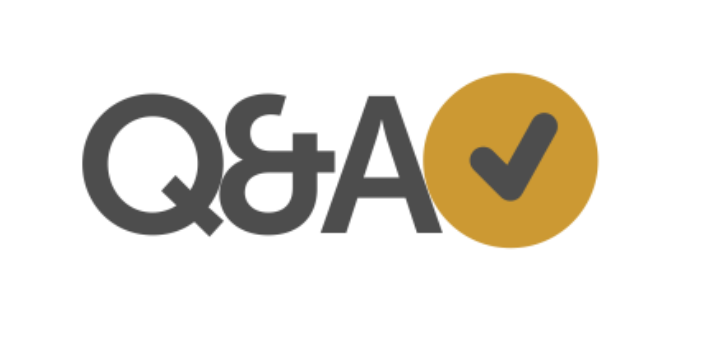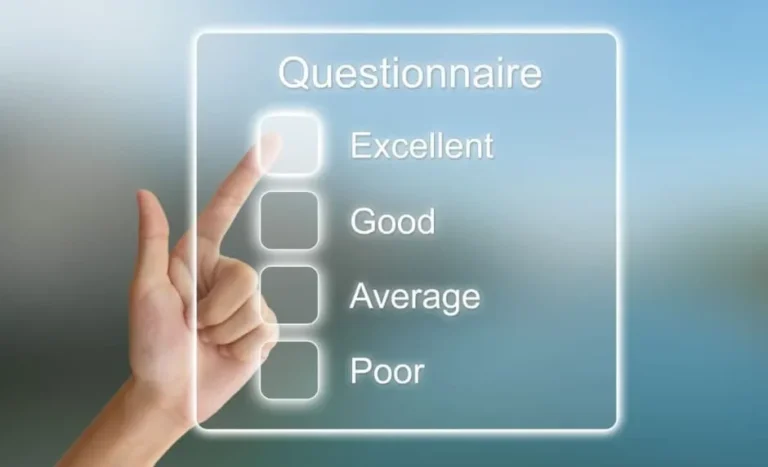Webinars are super important for sharing knowledge, promoting businesses, and connecting with communities. But with so many online events happening, webinar survey questions ensure your webinar stands out and helps the people attending.
How do you know what your audience wants? And how can you make your presentations even better? Well, the secret sauce is creating awesome survey questions. Getting feedback from your audience can turn your webinar from just okay to being awesome!
In this blog post, you’ll learn how to make webinar survey questions work for you. From asking about what people like to check if your content hits the mark, we’ll show you how crafting smart surveys can level up your webinar game and make a big impact on your audience.
So, let’s get started and make your next webinar unforgettable!
Table of contents
- What are Webinar Survey Questions?
- Benefits of Webinar Survey Questions
- What are the Key Factors to Consider for Webinar Survey Questions?
- Who Should You Ask Webinar Survey Questions?
- Pre Webinar Survey Questions
- Post Webinar Survey Questions
- Webinar Survey Questions | Samples
- Tips for Crafting Webinar Survey Questions
- FAQs on Webinar Survey Questions
- Conclusion
- References
- Recommendations
What are Webinar Survey Questions?
Webinar survey questions are questions you ask people after they’ve finished watching a webinar. These questions help you understand how they felt pre to post webinar.
They can cover a wide range of topics, including:
- Content Relevance: Asking participants if the content covered in the webinar was relevant to their needs or interests.
- Presentation Style: Inquiring about the clarity, engagement, and effectiveness of the presenter’s delivery.
- Technical Aspects: Checking if attendees encountered any technical issues during the webinar, such as audio or video problems.
- Audience Engagement: Assessing the level of interaction and engagement during the webinar, such as through polls, Q&A sessions, or chat participation.
- Suggestions for Improvement: Invite participants to provide suggestions or areas where the webinar could be improved for future sessions.
- Overall Satisfaction: Measuring overall satisfaction with the webinar experience and whether participants found it valuable.
Benefits of Webinar Survey Questions
Webinar survey questions have lots of good things for both hosts and attendees:
- Better Understanding: These questions help hosts know what attendees like and want from webinars. This helps hosts plan future webinars that people will like more.
- More Engagement: When hosts ask for feedback, it shows they care about what attendees think. This makes attendees feel more connected and trusting.
- Checking Quality: Surveys tell hosts if their presentations are good or need improvement. This helps hosts make their webinars even better.
- Happier Attendees: When hosts listen to feedback and make changes, attendees are happier. This means they’re more likely to come back for future webinars and tell others about them.
- Using Data Smartly: Survey answers give hosts useful info they can use to plan content, advertise, and schedule webinars in the future.
- Spotting Trends: By looking at survey results over time, hosts can see what’s becoming popular or what people aren’t liking as much. This helps them adjust their webinar plans.
- Building Connections: When hosts ask for feedback, it shows they’re serious about making things better. This makes attendees feel valued and builds stronger relationships.
- Showing Worth: Survey answers prove that webinars are helpful and important. This reminds everyone how valuable webinars are for sharing knowledge and connecting with others.
Read: 50 Best Employee Satisfaction Survey Questions With Samples
What are the Key Factors to Consider for Webinar Survey Questions?
When making survey questions for webinars, it’s important to think about a few important things to make sure the questions get useful answers. Here are some things to think about:
- Purpose and Objectives: Figure out what you want to learn from the survey. Do you want to know if people liked the content, how the presenter did, or if there were technical issues? Make sure your questions match what you’re trying to find out.
- Know Your Audience: Understand who’s going to answer your survey. What do they know already? What do they like? This will help you make questions that they’ll understand and care about.
- Types of Questions: Decide what kinds of questions will work best. You can use different types like multiple-choice, rating scales, or just asking for opinions. Using a mix can help get different kinds of feedback.
- Keep it Clear and Simple: Make sure your questions are easy to understand. Don’t use fancy words or complicated sentences. You want everyone to know exactly what you’re asking.
- Stay on Topic: Only ask questions that are important to your webinar. Don’t add extra stuff that doesn’t matter. This makes sure people stay focused on what’s important.
- Ask for Both Good and Bad Feedback: It’s good to know what people liked and what they think needs work. Make sure you ask about both so you get a balanced view.
- Make it Interesting: Try to make your questions engaging so people want to answer them. You can use different types of questions and even add interactive things like polls.
- Give Clear Answer Choices: For questions where people choose an answer, make sure the choices make sense and cover everything. This helps you get accurate responses.
- Keep it Short: Don’t make your survey too long. People are busy, so keep it focused on the most important things. This way, more people will finish it.
- Test it Out: Before sending the survey to everyone, try it with a few people first. This helps you catch any problems or confusing parts before it goes to a big group.
Read Also: 125+ Pulse Survey Questions With Sample
Who Should You Ask Webinar Survey Questions?
When it comes to asking webinar survey questions, it’s important to target the right audience to gather meaningful feedback. Here are some key groups you should consider surveying:
When asking survey questions for webinars, it’s crucial to ask the right people to get helpful answers. Here are some groups you should think about:
- People Who Attended: These are the folks who watched your webinar. They experienced everything firsthand, so their feedback is really important for making future webinars better.
- People Who Didn’t Attend: It’s useful to ask people who signed up but didn’t show up. Their reasons can tell you why they missed it, like if they were busy or just weren’t interested.
- People Who Came Before: If you’ve done webinars in the past, asking those attendees what they liked or didn’t like can give you ideas for the future.
- People Who Might Come: Even if they haven’t been to your webinars yet, asking potential attendees what they’re interested in can help you plan better topics and formats.
- Stakeholders: Depending on what your webinar is about, you might want to ask colleagues, partners, or sponsors for their thoughts to make sure everything lines up with your goals.
Pre Webinar Survey Questions
- What motivated you to register for this webinar?
- How would you rate your familiarity with the webinar topic?
- Have you attended similar webinars or events in the past?
- What specific aspects of the webinar topic are you most interested in learning about?
- What challenges or questions do you hope this webinar will address?
- How did you hear about this webinar?
- On a scale of 1 to 10, how important is this topic to you professionally/personally?
- What is your preferred learning style? (e.g., visual, auditory, hands-on)
- Do you have any specific expectations or goals for this webinar?
- Are there any particular areas within the topic that you would like the presenter to focus on?
- How confident are you in your current understanding of the webinar topic?
- Have you taken any actions or initiatives related to the webinar topic in the past?
- What challenges do you anticipate facing in implementing the insights from this webinar?
- Are there any specific questions you hope the presenter will address during the webinar?
- What time(s) of the day is most convenient for you to attend a webinar?
- How likely are you to actively participate in polls or Q&A sessions during the webinar?
- Would you be interested in receiving additional resources or materials related to the webinar topic?
- Are there any accessibility accommodations you require to fully participate in the webinar?
- How comfortable are you with using webinar platforms or online meeting tools?
- Are there any technical issues or concerns you anticipate encountering during the webinar?
- What are your preferred methods of communication for webinar reminders and updates? (e.g., email, SMS)
- Would you be interested in joining a follow-up discussion or networking session after the webinar?
- Are there any specific topics or themes you would like to see covered in future webinars?
- How likely are you to recommend this webinar to a colleague or friend?
- Is there anything else you would like to share or ask before the webinar begins?
Related Article: 125+ 360 Survey Questions With Sample Templates
Post Webinar Survey Questions
- How would you rate the overall quality of the webinar?
- Did the webinar meet your expectations?
- Was the webinar content relevant to your needs or interests?
- Did you find the webinar easy to understand?
- Did the presenter effectively engage you throughout the webinar?
- How would you rate the organization of the webinar (e.g., flow of topics, timing)?
- Did you encounter any technical issues during the webinar?
- How likely are you to recommend this webinar to others?
- What did you like most about the webinar?
- What aspects of the webinar could be improved?
- Did the webinar provide actionable insights or takeaways for you?
- How satisfied were you with the level of interaction during the webinar (e.g., polls, Q&A)?
- Would you attend another webinar hosted by [host/organization] in the future?
- How would you rate the length of the webinar?
- Did the webinar meet your learning objectives?
- Were the visuals (slides, graphics) helpful in understanding the content?
- Did the webinar inspire you to explore the topic further?
- How would you rate the presenter’s knowledge and expertise on the topic?
- Were there any topics you expected to be covered that were not addressed?
- Do you have any additional comments or suggestions for improving future webinars?
Webinar Survey Questions | Samples
Tips for Crafting Webinar Survey Questions
Creating good survey questions for a webinar is super important to get helpful feedback. Here are some tips.
- Keep it short: Make questions simple and easy to understand. Don’t use fancy words that might confuse people.
- Focus on goals: Think about what you want to learn from your audience. Ask questions that match what you’re trying to find out.
- Use different types of questions: Mix it up with multiple-choice, rating scales, yes/no, and open-ended questions to get different kinds of feedback.
- Start with basic info: Ask a few simple questions like age, gender, and job to know more about who’s attending.
- Ask about what they liked: Find out if people enjoyed the webinar and what parts they liked best.
- Leave space for thoughts: Include questions where people can share their ideas and suggestions freely.
- Keep it private: Tell people their answers are anonymous so they feel comfortable sharing honest feedback, especially on sensitive topics.
- Test it out: Try your questions with a small group first to make sure they’re clear and make sense.
- Keep it brief: Respect people’s time by keeping the survey short and focused on the most important things.
- Give a little something: Consider giving rewards or discounts to encourage people to fill out the survey.
- Follow up: After collecting answers, look over them and think about reaching out to people to talk about any issues or ideas they brought up.
FAQs on Webinar Survey Questions
How many questions you ask in your webinar survey depends on a few things, like how long your webinar was, how much feedback you want, and how long you think people will stay interested. Usually, it’s a good idea to keep the survey short and to the point, with about 5 to 10 questions. This helps prevent people from getting tired of answering too many questions.
It’s a good idea to send the survey shortly after the webinar ends, while everything is still fresh in people’s minds. Sending it within 1-2 days after the webinar is usually the best time.
You can motivate people to fill out the webinar survey by telling them how much their feedback helps make future webinars better. Also, make sure the survey isn’t too long or complicated. Offering a reward, like a chance to win something, can also encourage more people to participate.
You can look at all the answers together and find out what most people said. This helps you see if there are any trends or patterns in the feedback. You can use programs like Excel or special survey software to help you organize the answers and understand them better. Then, you can see if any big ideas come up a lot and figure out how to make things better based on what people said.
It’s a good idea to get back in touch with participants after looking at their survey answers. You can thank them for their feedback, tell them what you learned from it, and let them know about any changes you’re making because of what they said. This shows them that you appreciate their input and that you’re using it to make the webinars better in the future.
Conclusion
Webinar survey questions are super important because they help hosts know what their audience likes and how they can do better next time.
When you listen to what people say in these surveys, it helps you make your presentations even better. Also, it shows that you care about what your audience thinks and want to work together to make things great. So, with every survey response, you get closer to making webinars that everyone enjoys and learns from.
References
- Glueup.com – 21 Webinar Survey Questions to Ask
- Surveysparrow.com – 30+ Post Webinar Survey Questions
- Hubilo.com – Pre & Post Webinar Survey Questions to Ask Your Audience





